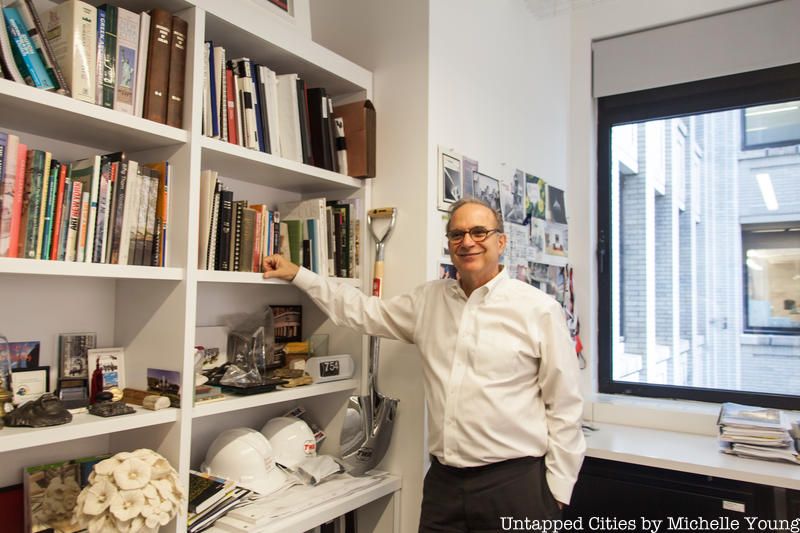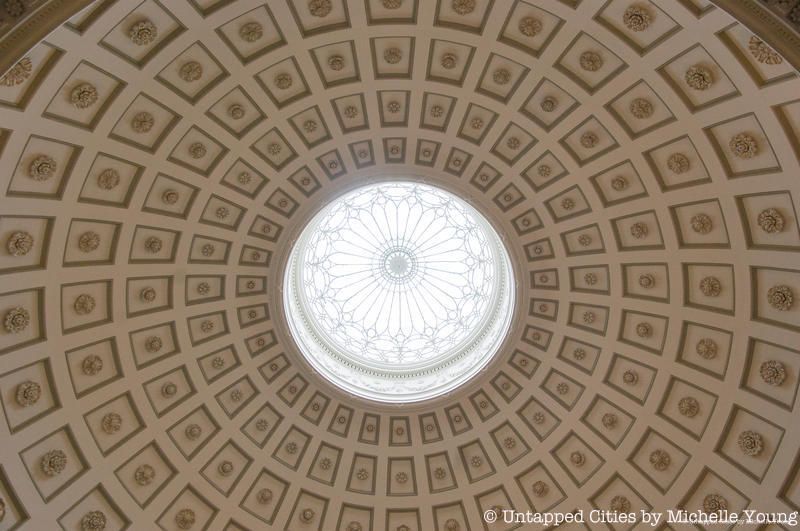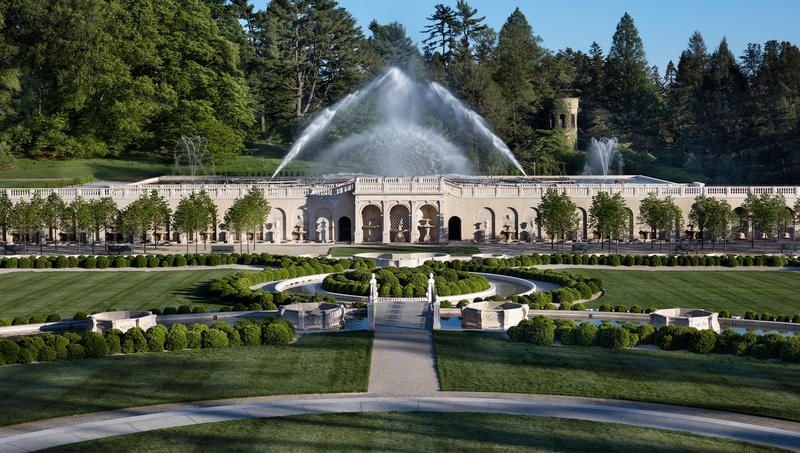Last Chance: The Annual Orchid Show Soars at the New York Botanical Garden
The vibrant colors of Mexico come to NYC for a unique Orchid Show at NYBG!


Welcome to the new Untapped Cities series, NYC Makers, where we profile the city’s movers and shakers – the people changing and making the city before our very eyes. Our first Q&A is with architect Richard Southwick, Partner and Director of Historic Preservation at Beyer Blinder Belle. Southwick’s latest project is the highly anticipated TWA Hotel which opens on May 15th. Beyer Blinder Belle is the architectural firm of record for the TWA Hotel at John F. Kennedy Airport, and has been working on the restoration of the landmarked TWA Flight Center for over 20 years. Beyer Blinder Belle has also been behind some of the most high-profile restorations and projects throughout the city, including Grand Central Terminal, The Frick Collection, The Metropolitan Museum of Art, the New York Botanical Garden, and many more.
We caught up with Southwick in his office at 120 Broadway, better known as the Equitable Building. This building in Lower Manhattan greatly influenced the city’s zoning codes and remains an icon for urban planners and architects alike. Beyer Blinder Belle is also working on the restoration of the building, which will include new ground floor retail, a restored lobby, and a new rooftop deck on the 40th floor open to all building employees. Southwick’s office is full of memorabilia, photographs and sketches from past and current projects and we had a chance to talk about several of them in our interview.
Southwick: Snug Harbor Cultural Center & Botanical Garden is one of the most incredible spaces. You have the Chinese [Scholar’s] Garden as part of it and the Staten Island Botanical Garden. It’s this assembly of beautiful buildings, a wonderful campus, kind of like UVA in a sense, without having any real recognition. It’s actually a shame the city has not done more for it.
Another “untapped” underdeveloped, adaptive reuse site is the south side of Ellis Island. I’ve been on the board of Save Ellis Island for years. We’re supposed to run a workshop sometime this spring to once again look at more plausible, or feasible uses for the south side of Ellis Island. [Save Ellis Island is the organization formed to save the abandoned hospital complex on the south side of Ellis Island. Untapped Cities runs a weekly hard hat tour of the abandoned buildings in partnership with Save Ellis Island.]
Southwick: Four Freedoms Park on Roosevelt Island coupled with touring the old hospital ruins. Also [the new section of] Hunter’s Point South Park.
Southwick: New York is so vibrant, it’s full of energy and it really conveys this wonderful 400 year history. You have buildings as old as the 1600s — Wyckoff House – and finally in the last half generation, [Beyer Blinder Belle] is starting to do contemporary works as well. One of the walks I find really interesting is Broadway. You start up by Columbia University and you come all the way down to The Battery and it changes block by block, neighborhood by neighborhood. It’s a little more homogenous now than it used to be, but still there’s enough neighborhood identity [left].
Here, we asked Southwick what he believed is the cause of homogeneity in New York, and he said in one word, “gentrification.”

Southwick: Infrastructure. Absolutely. I’d make it more pedestrian friendly, I would invest tons in really good mass transit, and I would invest tons in New York City parks.
Southwick: I just finished The American Eden by Victoria Johnson, which is absolutely terrific. It’s the story of David Hosack, who founded the first American botanical garden in the early 1800s. He was a physician and very involved with plant-based medicines and he did this large botanical garden that was on the site of what is now Rockefeller Center. But he’s world known and he’s just being recognized again. I just started The Education of a Gardner by Russell Page.
 The TWA Flight Center. Photograph by Max Touhey, Courtesy of MCR
The TWA Flight Center. Photograph by Max Touhey, Courtesy of MCR
Southwick: The Frick Collection. I’ve been working with Annabelle Selldorf for a couple years on that. The restoration of the Hungarian Stock Exchange in Budapest, which is this absolutely beautiful, enormous Secessionist building from 1905 on the most important square very close to Parliament. It will be converted into office space and residential. And lots of Hungarian pastry shops. Wonderful city, wonderful location.
Here, we took a segue to talk about the filming of The Alienist in Budapest, where the New York City of 1896 was literally recreated, because Old New York could not be found in actual New York City anymore.
Southwick: Hmm…this is like which kid do you like the best! [One of them is] the Red Star Line Museum, which is the counterpart to the Ellis Island Museum. It’s a museum of emigration in Antwerp with some of the last existing immigration stations in Europe. Most of them were bombed out in World War II because they were in important port locations. We did restoration, we did interpretation plans and new contemporary tower addition which is kind of in dialogue with the Statue of Liberty.

Red Star Line Museum, courtesy of Red Star Line Museum
New York City Hall, which is what I call the “X-Ray Glasses Project,” was really in pretty bad disarray when we got involved with it and did a full restoration. We integrated all new systems. Because of that it was an excuse to restore the building inside and out. So when you walk through, it’s like “Oh, nothing ever changed,” but if you had x-ray glasses, you could see everything going on behind the scenes.

New York City Hall
Longwood Gardens outside of Wilmington, Delaware. Do you know Longwood? People all around the world know about this other than New Yorkers. It’s really odd, I talked to so many people here. It’s a Dupont family garden – it’s been a public garden since the 1930s, it’s of the scale or greater than New York or Brooklyn [botanical gardens]. It was about a $90 million restoration of this beautiful, Villa D’este-type of garden.

Longwood Gardens, photograph by John Bartelstone
My favorite project I think overall, besides my current gigs, is the historic aviation building (Building 1) in Newark Airport. It’s the first modern terminal anywhere in the nation. Amelia Earhart used to fly out of it, Wiley Post, all those early aviation pioneers. We moved it half a mile down a taxiway because it was being endangered by the extension of a runway. It’s a 1935 Art Deco building. First night landings, first weather station, one of the first observation towers. Arshile Gorky did a series of paintings as part of the WPA project. Most of those were destroyed, but we uncovered a few. We completed a big restoration of the building and then we tripled the size with a large new addition, so it’s now the operations and administration center for the airport. Pentagram did a big 9/11 Memorial sculpture in the center [and] there’s a big historic exhibit we got involved with. There was a little bit of everything: new construction, old construction, interpretation, historic exhibits, moving the building which is one of the tools in our preservation toolbox. [It was] the biggest move of its type in the history of the country. And it’s open to the public!

Building 1 at Newark Airport. Photo ©Frederick Charles, fcharles.com, courtesy of Beyer Blinder Belle.
Southwick: High school students come in a lot and they ask, what architectural school should I go to? And I say, “None. Don’t.” Go out and get the absolute best liberal arts degree that you can and if you’re still interested two years into that, then let’s talk. Getting a really well-rounded education may not help you in the first five years out of school because you’re just kind of learning your new profession, but it certainly helps a lot afterwards. An architect has to know the lifestyle or the profession of our clients, and the more well-rounded you are, the more well-equipped you will be for that. I often tell people that design is the easiest thing that we do – not that it is easy – but you have to be a psychologist, a diplomat, a journalist or a writer, an interviewer, and a whole lot of skills besides getting on the computer or getting the drawing board out.

Southwick: I’ll give you one personal and one professional thing. Personally, I live in a 1780s stone cottage, in a little place called Califon, New Jersey. It’s an assembly of these four old stone buildings and gardens. We’ve been fixing it up for 30 years, and now I’m fixing up what I restored up when I first moved in. And I’ve worked on the most historic building in all the area, the airports: TWA, the Marine Air Terminal, Building One (at Newark Airport), Floyd Bennett Field. Flying is a passion of mine.
Stay tuned for our upcoming coverage of the TWA Hotel, including more with Richard Southwick. And keep your eye out for our next NYC Makers profile!
Subscribe to our newsletter